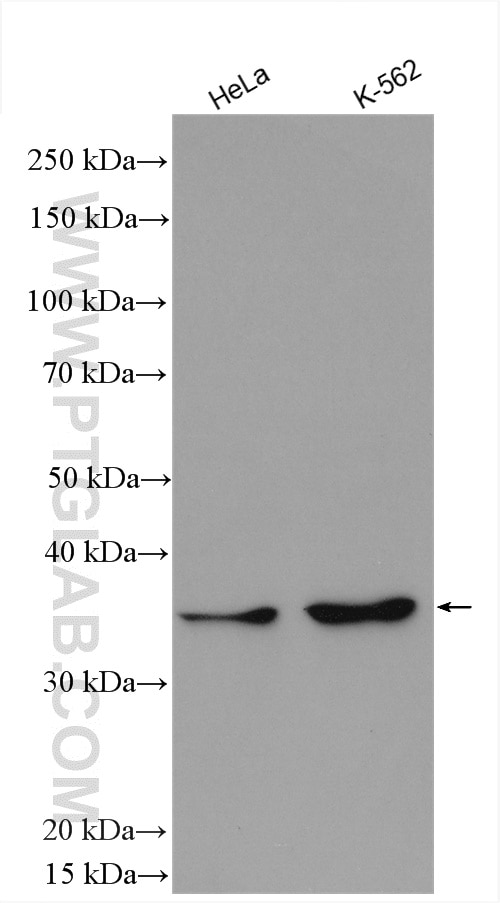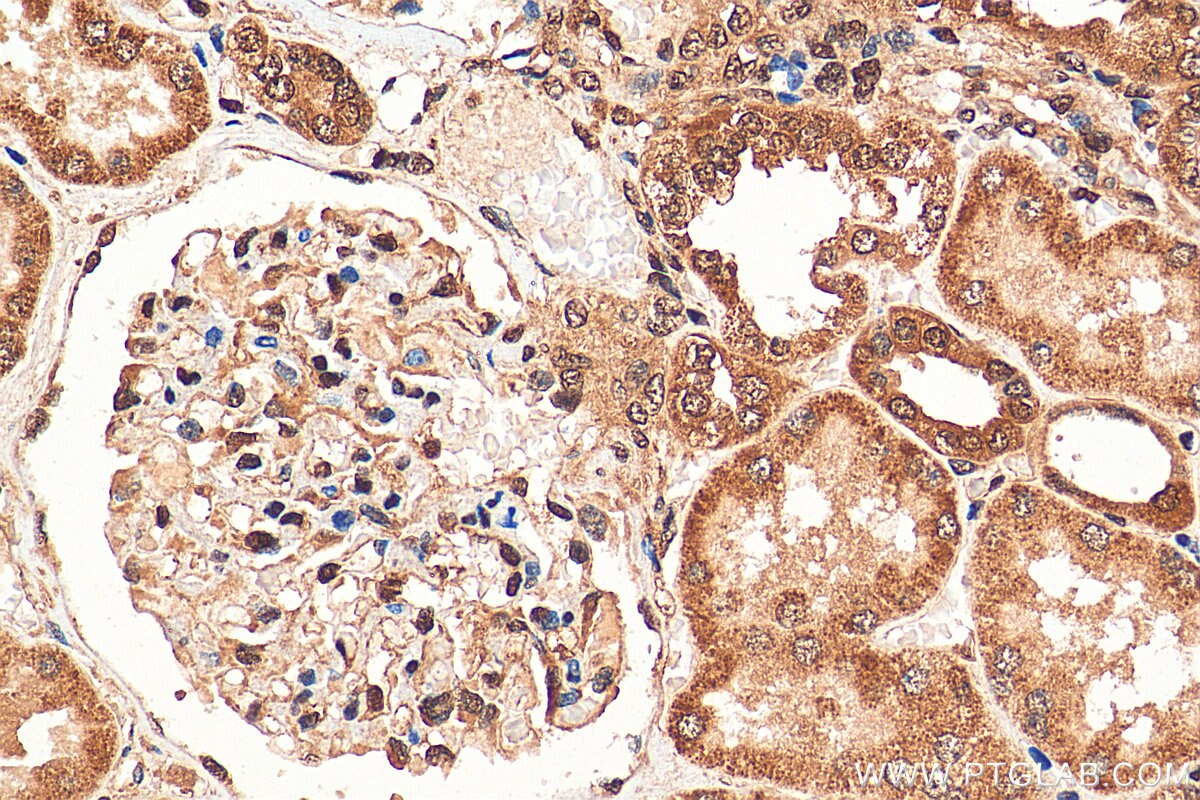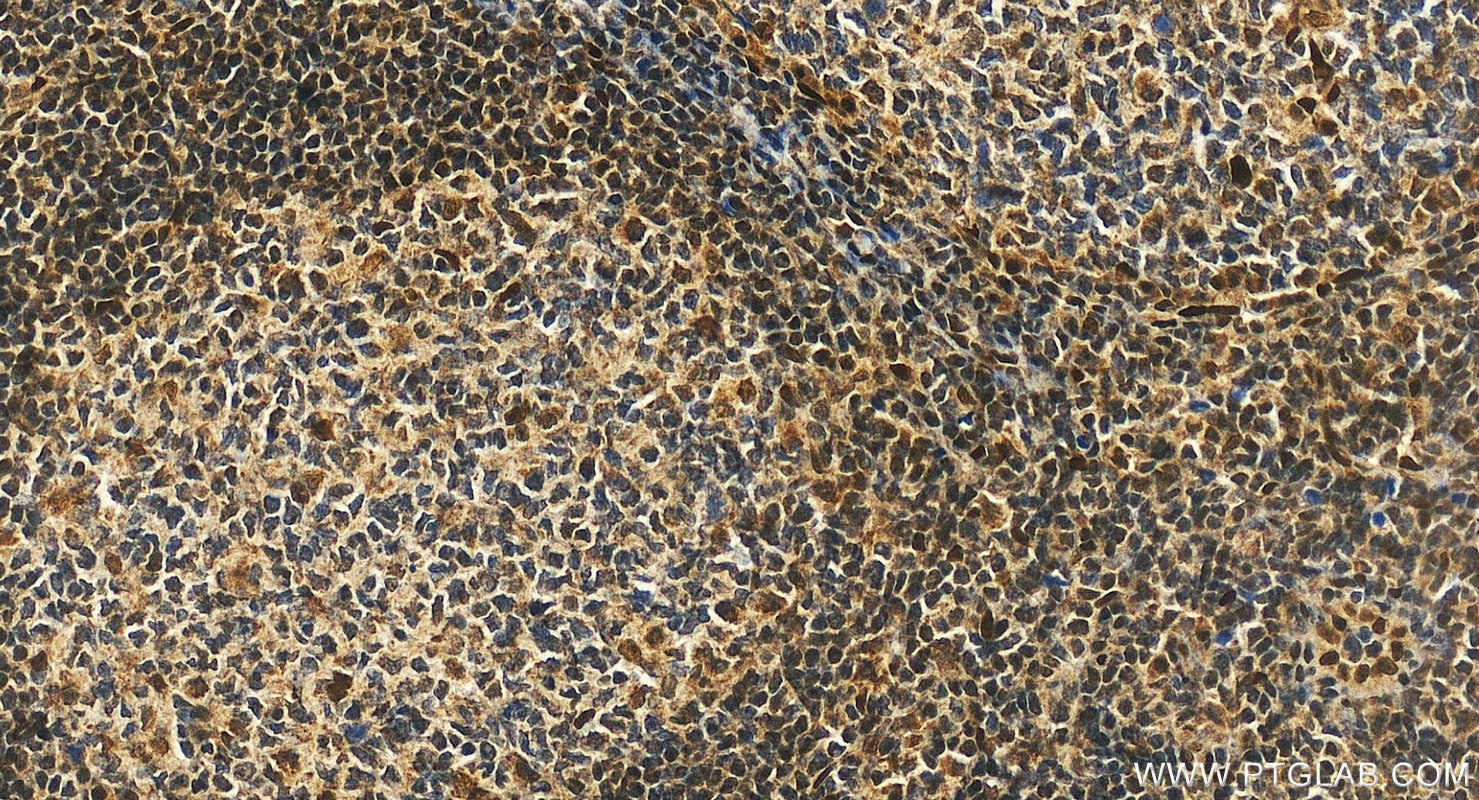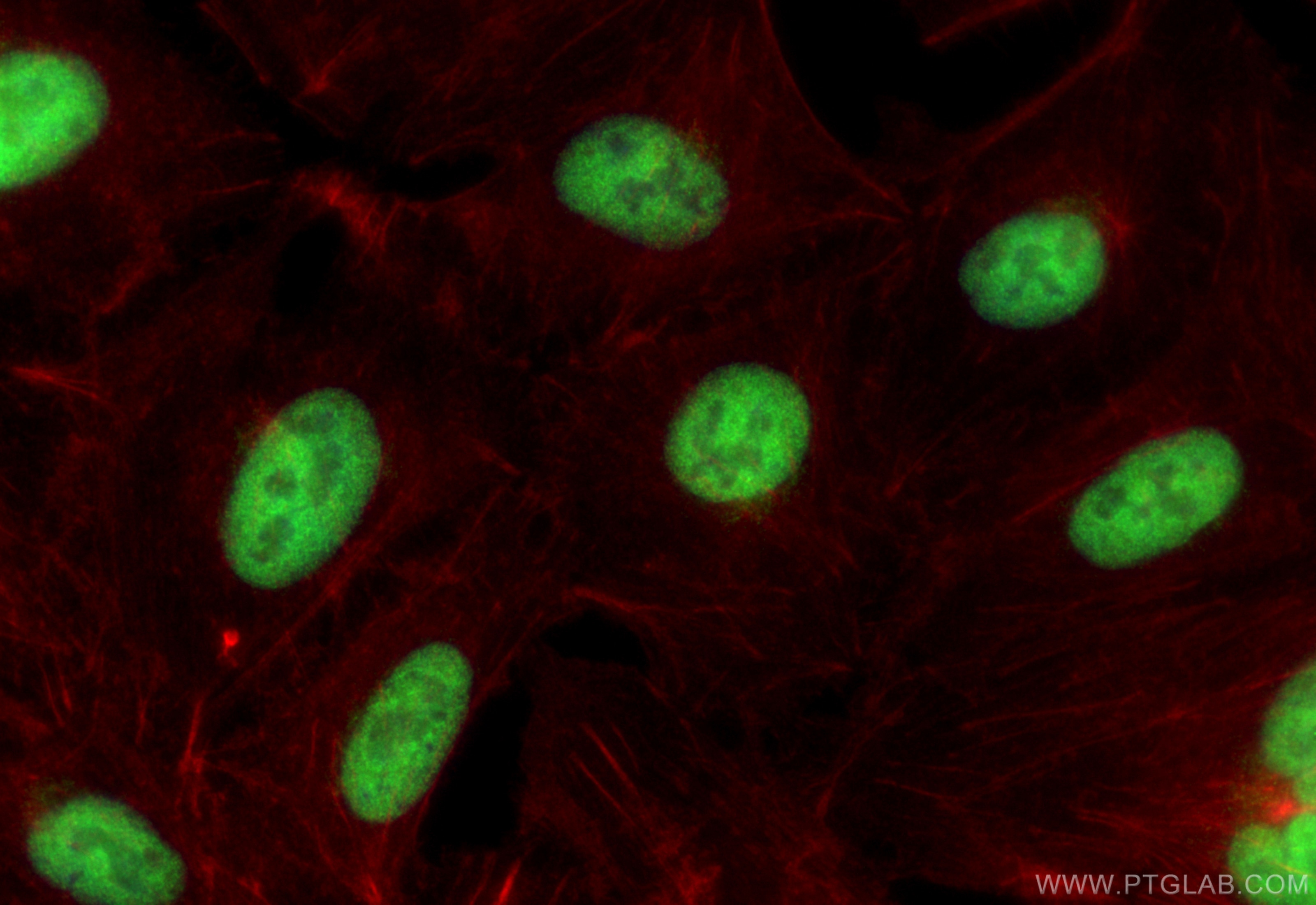Anticorps Polyclonal de lapin anti-WDR5
WDR5 Polyclonal Antibody for WB, IHC, IF/ICC, ELISA
Hôte / Isotype
Lapin / IgG
Réactivité testée
Humain, rat, souris
Applications
WB, IHC, IF/ICC, CoIP, ChIP, ELISA
Conjugaison
Non conjugué
N° de cat : 15544-1-AP
Synonymes
Galerie de données de validation
Applications testées
| Résultats positifs en WB | cellules HeLa, cellules K-562 |
| Résultats positifs en IHC | tissu rénal humain, tissu d'amygdalite humain il est suggéré de démasquer l'antigène avec un tampon de TE buffer pH 9.0; (*) À défaut, 'le démasquage de l'antigène peut être 'effectué avec un tampon citrate pH 6,0. |
| Résultats positifs en IF/ICC | cellules A549, |
Dilution recommandée
| Application | Dilution |
|---|---|
| Western Blot (WB) | WB : 1:1000-1:4000 |
| Immunohistochimie (IHC) | IHC : 1:200-1:800 |
| Immunofluorescence (IF)/ICC | IF/ICC : 1:200-1:800 |
| It is recommended that this reagent should be titrated in each testing system to obtain optimal results. | |
| Sample-dependent, check data in validation data gallery | |
Applications publiées
| WB | See 10 publications below |
| IF | See 1 publications below |
| CoIP | See 1 publications below |
| ChIP | See 1 publications below |
Informations sur le produit
15544-1-AP cible WDR5 dans les applications de WB, IHC, IF/ICC, CoIP, ChIP, ELISA et montre une réactivité avec des échantillons Humain, rat, souris
| Réactivité | Humain, rat, souris |
| Réactivité citée | Humain, souris |
| Hôte / Isotype | Lapin / IgG |
| Clonalité | Polyclonal |
| Type | Anticorps |
| Immunogène | WDR5 Protéine recombinante Ag7900 |
| Nom complet | WD repeat domain 5 |
| Masse moléculaire calculée | 37 kDa |
| Poids moléculaire observé | 36 kDa |
| Numéro d’acquisition GenBank | BC001635 |
| Symbole du gène | WDR5 |
| Identification du gène (NCBI) | 11091 |
| Conjugaison | Non conjugué |
| Forme | Liquide |
| Méthode de purification | Purification par affinité contre l'antigène |
| Tampon de stockage | PBS with 0.02% sodium azide and 50% glycerol |
| Conditions de stockage | Stocker à -20°C. Stable pendant un an après l'expédition. L'aliquotage n'est pas nécessaire pour le stockage à -20oC Les 20ul contiennent 0,1% de BSA. |
Informations générales
The WDR5 antibody targets the WD repeat protein domain 5 (WDR5), a member of the WD40 repeat protein family in humans. The WDR5 protein is a core member of the mammalian trithorax complex and, like the rest of the WD40 repeat protein family, is primarily involved in diverse cellular processes. WDR5 is identified as a methyl Lys-4 H3-specific-binding protein, however it is known to interact with the Mixed Lineage Leukemia (MLL) protein at the same site for histone H3 tri-methylation(PMID:18840606). Recently, the WDR5 protein has been shown to regulate embryonic stem cell self-renewal, and an increased expression of WDR5 has been found to efficiently induce the formation of pluripotent stem cells (PMID:21477851). WDR5 is also shown to accelerate osteoblast and chondrocyte differentiation(PMID:16730692 ).
Protocole
| Product Specific Protocols | |
|---|---|
| WB protocol for WDR5 antibody 15544-1-AP | Download protocol |
| IHC protocol for WDR5 antibody 15544-1-AP | Download protocol |
| IF protocol for WDR5 antibody 15544-1-AP | Download protocol |
| Standard Protocols | |
|---|---|
| Click here to view our Standard Protocols |
Publications
| Species | Application | Title |
|---|---|---|
Nat Commun KMT2A associates with PHF5A-PHF14-HMG20A-RAI1 subcomplex in pancreatic cancer stem cells and epigenetically regulates their characteristics | ||
Sci Adv EIF3D safeguards the homeostasis of key signaling pathways in human primed pluripotency | ||
Sci Adv A MYC inhibitor selectively alters the MYC and MAX cistromes and modulates the epigenomic landscape to regulate target gene expression. | ||
Proc Natl Acad Sci U S A Compensatory functions of histone deacetylase 1 (HDAC1) and HDAC2 regulate transcription and apoptosis during mouse oocyte development. | ||
Pharmacol Res HPV E7-drived ALKBH5 promotes cervical cancer progression by modulating m6A modification of PAK5 | ||
Nat Aging Transcriptional and epigenetic dysregulation impairs generation of proliferative neural stem and progenitor cells during brain aging |





